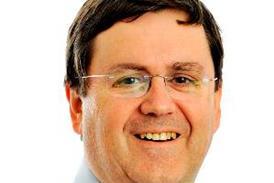The popular perception is that the fortunes of the NHS rise and fall on a national basis. HSJ readers will know the true picture is one of variation – often stark – between organisations and regions.
There are, of course, factors that have an impact on all NHS organisations – most notably nationally driven decisions on overall funding and structure. But the truth is that some organisations are able to withstand the harshest environment, while others struggle even as the good times roll. What happens as fortunes shift is the number of organisations prospering or struggling flexes and, most significantly, the most challenged organisations slide into crisis – usually requiring external support to survive.
NHS chief executive Sir David Nicholson has urged the boards of provider trusts to ensure they do not sign off “unrealistic” savings plans for 2011-12. Our unique analysis of the savings plans prepared by acute trusts shows that many organisations are certainly being ambitious – but more clearly how the iron law of variation is making itself felt again. Life will be very different at Imperial College Healthcare Trust (attempting to achieve an 8 per cent saving on a turnover of £900m) or Epsom and St Helier (12.7 per cent on £329m) from that at Leeds Teaching Hospitals trust (4 per cent on £954m) or Countess of Chester Hospital Foundation Trust (4 per cent on £172m).
Further illumination comes when you cross check with the list, exclusively revealed by HSJ, of the 22 organisations whose path to foundation status is being hampered by private finance initiative schemes. There we find Mid Essex (looking to saving 10.4 per cent), Barts and the London (7 per cent on £686m), Buckinghamshire Hospitals (8 per cent) and Oxford Radcliffe (8 per cent on £636m). Many others on that list have targets well above 4 per cent annual savings needed to achieve the national efficiency goal.
The reaction from HSJ readers to Sir David’s plea for realism on savings is to ask the same from him. As one contributor to hsj.co.uk said: “What choice do we have when there are gaps of several million between our run rate and available funding?”
HSJ predicts an outbreak of honesty across the country as it no longer proves possible to disguise the tension between the two in at least 20 provider trusts. The Department of Health knows this day is coming and is working feverishly with the relevant strategic health authorities on a solution.
The focus of the debate about the fortunes of the NHS is about to shift from, largely, esoteric debates about commissioning governance to the future of the nation’s hospitals. We will leave readers to decide which might be the most significant.























No comments yet